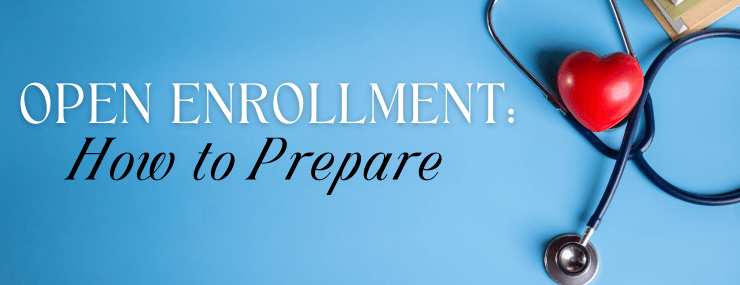
Fall is here – have you reviewed your benefits yet?
At most companies, open enrollment happens during the last 4-6 months of the year. This is when employees can change their workplace benefits, or enroll in new ones.
In a survey by AFLAC, 92 percent of respondents said that they opted for the same benefits year after year. Choosing the same benefits as last year might be common, but that doesn’t mean it’s the best course of action for you. By not reviewing your benefits on an annual basis, you might be missing out on significant savings or other perks.
Preparing for Open Enrollment
You probably know how it goes by now; you might receive an information packet about your benefits, skim the options, and choose which plan sounds best after a quick review.
But there is a lot of risk in approach, especially if you’ve had any big life changes recently. For example, you might need to change your dependents, add a new member of the family, cancel a plan or sign up for a new benefit. Open enrollment is the ideal (and sometimes, the only) opportunity to make those changes.
If you want to get the most out of your benefits over the next year, give yourself plenty of time to prepare.
- Take some time to review how your current health insurance plan has worked for you. Figure out how much you spent this year on healthcare, and know what your deductible, co-pay, and premium costs. Use that information to compare your current plan to other options.
- Use the resources your workplace offers for open enrollment. Some companies bring in representatives to talk with their employees one-on-one, or host an informational session to better explain the benefits.
- Pay attention to what would be covered in a new plan, and whether your current doctors or services would be in-network. Note which doctors or services you prioritize most, and what you would consider essential for your needs.
What Does Open Enrollment Include?
Typically, open enrollment includes employer-sponsored health insurance and other workplace benefits. Depending on where you work, you might have to re-enroll every year, or only make changes when necessary.
Open enrollment dates vary by employer, but it often spans a few weeks every fall. The changes you make during open enrollment will usually kick in on Jan. 1 of the upcoming year.
FSA, HSA and other benefits: Prepare for open enrollment
During open enrollment, you can add or adjust a flexible savings account (FSA) or health savings account (HSA.) These accounts offer tax benefits for putting money aside for qualified expenses.
These accounts cover similar medical and care costs, but there are some differences. Make sure you check with your employer to see which accounts they offer, and which would be better for you.
You can also update or add on disability and life insurance policies, if needed.
Here is an overview of those benefits:
-
Health Savings Account (HSA)
HSAs are savings accounts funded with pre-tax contributions. They also have tax-free earnings and tax-free withdrawals for qualified medical expenses. If you don’t spend the money in your HSA, it will continue to roll over to the next year until you use it.
2025 account limits: $4,300 for self and $8,550 for families, plus $1,000 catch-up payment for anyone aged 55 or over.
-
Health Flexible Savings Account (FSA)
Like HSAs, health FSAs are funded with pre-tax money and can be deducted from tax-free for qualifying health and medical expenses. Unlike an HSA, FSA accounts do have a “use it or lose it” rule, so you will lose out on any unspent money in your account. (Some employers do allow a grace period of up to 2.5 months to spend that money, or up to $660 in rollover money.)
2025 account limit: $3,300
-
Dependent Care FSA
A Dependent Care FSA offers the benefits of an FSA for child or adult care expenses. Check with your employer for specific rules and guidelines they might have. With a dependent care FSA, you usually pay out of pocket and then get reimbursed later, so make sure to keep excellent records of your costs and set a reminder to apply for reimbursement when it’s time.
2025 account limits: $5,000 per year per household, or $2,500 for married filing separately.
-
Disability insurance
Disability insurance is a frequently forgotten but very important benefit. It is intended to replace your income in the event of an illness, injury or other disability that prevents you from working. Read my post about disability insurance here.
-
Life insurance
Many employers offer a life insurance option, and it’s a good idea to sign up. That being said, you often need to supplement that insurance with other life insurance sources, but you should still learn more about what is offered through your employer. Read my post about life insurance here.
Additional Resources
Need more information about open enrollment? Here is a collection of previous years’ posts that should help you get started:
Open Enrollment: What to Look for in Mid-Career
Why You Should Review Your Benefits Every Year
Your Comprehensive Guide to Open Enrollment
About Your Richest Life
At Your Richest Life, Katie Brewer, CFP®, believes you too should have access to financial resources and fee-only financial planning. For more information on the services offered, contact Katie today.
